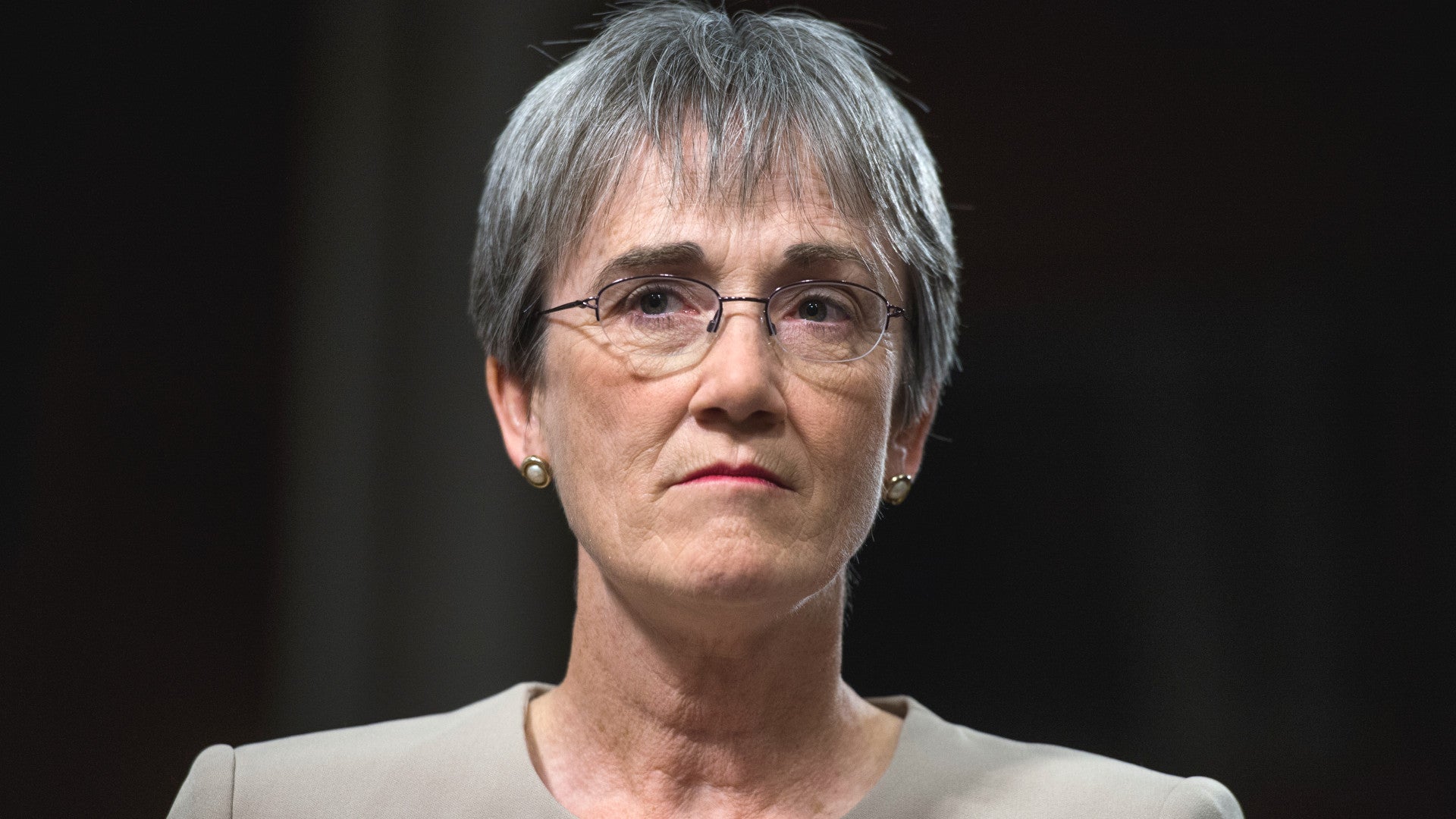It’s no secret that that the U.S. military loves its jargon and acronyms, which can be painfully obtuse and hard to explain at times. So it’s either worrisome, oddly cathartic, or both, when a top American defense official like Secretary of the Air Force Heather Wilson appears unable explain something as important as the Pentagon’s so-called “Third Offset” strategy.
The apparent revelation came in a series of posts on Twitter on Aug. 22, 2017. Defense One’s Marcus Weisgerber
had complained about the U.S. Air Force’s choice of language as it announced the latest developments in its project to buy all-new intercontinental ballistic missiles. Secretary Wilson, or at least her official Twitter account, responded to the post, agreeing that the official statement had been jargon heavy and offering a clarification. Dave Brown, a senior editor at the Washington Examiner than jumped in to ask about the Third Offset.
“Wait, wait. Don’t leave! Can you explain the Third Offset Strategy?” Brown wrote. “Funny, Dave, I asked the same thing recently!” Wilson Tweeted back.
We don’t know for sure if this means she is or was unaware of the Third Offset. It does sound like she had recently asked someone to break down the strategy for her because she was unclear as to what it entailed.
For those who don’t know, the Third Offset is the U.S. military’s plan for how to continue outmatching its opponents even in the face of a shrinking overall force size and increasing technological developments abroad. It’s a central consideration for both research and development and actual military equipment purchases.
At least initially, there were six main focus areas, the most important being developing ways to defeat increasingly advanced, long-range, and networked enemy defenses, known collectively by the equally jargony term “anti-access/area-denial” threats, or A2AD. The other five areas dealt with precision guided munitions, manned and unmanned underwater technology, cyber and electronic warfare systems, teams of manned and unmanned vehicles, and new concepts of operation that would bring all of this advanced technology together.

The strategy applies to the Pentagon broadly, but the U.S. Navy and Air Force have been its primary benefactors. A significant portion of Third Offset developments are apparently so advanced that U.S. military officials only make vague references to them and have yet to put them on public display. The secretive Strategic Capabilities Office (SCO), which answers directly to the Office of the Secretary of Defense, facilitates many of these efforts.
Now, it’s true that the Third Offset may seem complicated to the average American. It’s also hardly the first time a senior U.S. defense official has admitted publicly to getting lost in the alphabet soup of American military acronyms and their associated jargon.
In February 2016, U.S. Navy Admiral Harry Harris, Jr., head of U.S. Pacific Command, was in the middle of a congressional hearing when, in a moment of frustration, he explained he couldn’t remember that “LRS-B” stood for the “Long Range Strike Bomber.” This was the project that led to the B-21 Raider stealth bomber, itself a product of the Third Offset strategy

“[I’m] so glad to hear someone in your position who doesn’t know one of the acronyms that’s being used,” Jeanne Shaheen, a Democratic Senator for New Hampshire, told Admiral Harris. “Makes me feel so much better.”
“Acronyms kill, ma’am,” Harris told her.
Later on in the hearing, he admitted he couldn’t remember that “CFIUS” was “The Committee on Foreign Investment in the United States.” However, he could explain the organization’s purpose, which is to examine foreign investments and economic transactions for potential threats to American national security.
But understanding the Third Offset seems like it would be a critical part of being the top civilian official in the U.S. Air Force. Some may even wonder if this speaks to previous concerns about Secretary Wilson’s suitability for the job, which advocacy groups had raised during the nomination process.

Wilson, a long-time Republican member the House of Representatives, left Congress in 2009 and established a one-woman consulting firm. She secured contracts, totaling $450,000, for work at four U.S. national nuclear laboratories, Sandia National Laboratory, Los Alamos National Laboratory, Oak Ridge National Laboratory, and the Nevada National Security Site.
However, a 2013 investigation could not determine what, if any work she had actually done. Faced with this issue, the contractors who had brought her on simply opted to refund all of the money they had spent on her consulting fees to the federal government. The Department of Energy also looked into her work as part of a separate investigation into an illegal lobbying scheme, but could not determine conclusively if she was involved or not.
There’s no reason to imagine any of this would lead her to be ignorant of the Third Offset issue, though. Wilson is a graduate of the Air Force Academy and an Air Force veteran who went on to serve as the director for European Defense Policy and Arms Control on the National Security Council staff under President George H.W. Bush. She also holds a PhD in international relations from Oxford University.
There is always the possibility Wilson was making a lighthearted remark like Harris’ comment about acronyms. Whatever the case, there’s undoubtedly at least one person in the Air Force who can run through the Third Offset strategy for her if necessary.
Contact the author: joe@thedrive.com
Authors note: The original version of this article wrongly identified Defense One’s Marcus Weisgerber as “Marcus Weinberger.” It also incorrectly stated that the LRS-B was a SCO project, when it was a in fact run through the unrelated Air Force Rapid Capabilities Office. We apologize for the errors and any confusion.
